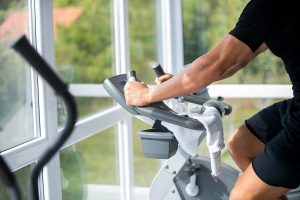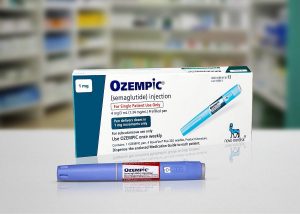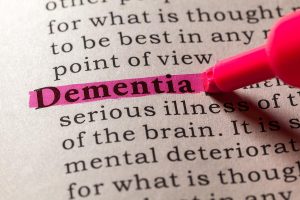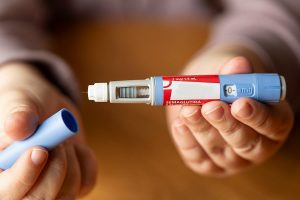(HealthDay News) — TVs and computers are part of everyday life, but the American Academy of Pediatrics urges caution about overuse of digital devices. They should never take the place of face-to-face time with family and friends, the academy says. The AAP suggests how to manage screen use at home: Set limits on media use and be aware of which software and apps your children are using, which sites they are visiting and what they are doing online. Encourage unplugged playtime. Screen time shouldn’t always bealone time. By watching with your children, you can encourage social interactions, bonding and learning. Be a good role model.Teach good manners online, and limit your screen time. Appreciate the value of face-to-face communication. Create tech-free zones during mealtimes, family and social gatherings. Don’t allow devices at night, to help kidsavoid the temptation to use them when they should be sleeping. Do research on any apps that your kids use to monitor quality and appropriateness. Warn children about privacy and the dangers of predators and sexting.
All Gear:
Many Medical Marijuana Patients Drive While High

Medical marijuana may help the thousands of Americans who use it, but far too many of these folks are getting behind the wheel while high, new research shows. In a poll of medical marijuana patients in Michigan, more than half acknowledged having driven within two hours of consuming a cannabis treatment at least once during the prior six months. About 20 percent they had done so while “very high,” while about half described being “a little high” while driving. “Perhaps more surprising is that many said that they drove under the influence pretty frequently, at least 10 times in the past six months,” noted study author Erin Bonar. She said that 7 percent of these frequent users said they had driven while very high and 19 percent had done so while a little high. “We didn’t know of other any studies that had asked medical marijuana patients about driving while high, so we were not sure what to expect,” added Bonar. She is an assistant professor in the department of psychiatry’s addiction center at the University of Michigan in Ann Arbor. “[But] we know that both alcohol and marijuana have risks and can be dangerous, and we would advise not driving after using either one,” Bonar stressed. So how exactly does marijuana undermine driving safety? “Research studies show that things like your coordination and reaction… read on >
Health Tip: Avoid Cellphone Use While Driving
(HealthDay News) — Drivers should avoid talking on their cellphones while on the road, the U.S. National Safety Council warns. It’s a myth that the human brain can simultaneously handle both the many aspects of driving while chatting with a cellphone in one hand, the council says. The agency dispels these additional myths: Talking on a cell phone is just like speaking to a passenger. Passengers can help the driver stay alert and navigate, while people on the other end of a phone call have no direct awareness of what is going on in the car. Speaking hands-free is safe while driving. The council warns that drivers on cellphones can be distracted enough to miss seeing pedestrians, red lights and stop signs. I only use my phone at stop lights, so it’s OK. Drivers should stay focused even at stop lights. A recent AAA study revealed that people are distracted up to 27 seconds after sending a text message.
The Link Between Social Media and Depression

Facebook, Twitter, Instagram — the list of popular social media outlets is long and always expanding. But could staying connected through them lead to depression? That’s the question posed by researchers from the University of Pittsburgh School of Medicine. Nearly 1,800 Americans, aged 19 to 32, answered questionnaires about their activity on 11 popular social media sites. On average, the participants spent just over an hour a day in total on social media, and went to their accounts 30 times a week. Whether engagement was measured in time or number of visits, the people in the top 25 percent of social media users had significantly higher odds of depression than the bottom 25 percent, between 1.7 and 2.7 times the risk. What the research didn’t unravel is what comes first — time spent with social media, or depression. People experiencing depression could be using social media to fill a void in their lives. Or social media may lead to depression and, in turn, more social media. Social media-depression connections: Seeing other people’s postings could make you believe your life is inferior. Excessive use could be a sign of internet addiction, which has been linked with depression. You may be at greater risk of cyber-bullying, which can lead to feelings of depression. Could you be going though depression? It can be hard sometimes to recognize it… read on >
New TikTok Trend of Mouth Taping During Sleep Carries Dangers

A new trend promoted on the social media platform TikTok has people taping their lips shut at bedtime — a practice that could be dangerous, an expert warns. The purpose of mouth taping is to keep from breathing through your mouth at night. “If you have obstructive sleep apnea, yes, this can be very dangerous,” sleep specialist Dr. Raj Dasgupta told CNN. “There is limited evidence on the benefits of mouth taping and I would be very careful — and even talk to your health care provider before attempting it,” added Dasgupta, an associate professor of clinical medicine at the University of Southern California Keck School of Medicine. Not everyone who has obstructive sleep apnea knows it. People with the sleep disorder stop breathing repeatedly during the night. More than 1 billion adults worldwide between the ages of 30 and 69 alone likely have the condition, according to a 2019 study. Millions are undiagnosed. The reasons given for the mouth taping trend include trying to achieve beauty sleep. “I tape my mouth shut every single day,” one woman said on TikTok. “Sleeping properly is really important to anti-aging and looking and feeling your best.” One woman said she doesn’t remember why she started taping her mouth shut at night. “Truth be told, I don’t know. I saw on TikTok and I can’t remember what the… read on > read on >
Can You Find True, Lasting Love on Tinder? Study Finds It’s Possible

Tinder, Grindr and other dating apps have a reputation for encouraging casual hookups, but a new study suggests app users may be looking for — and finding — love in all the right places after all. read on >
Sleepy Drivers Involved in 100,000 Crashes a Year

Driving under the influence and distracted driving are well-known hazards, but few people think twice about getting behind the wheel when feeling drowsy, a sleep expert warns. “Drivers can reduce the danger by being aware of risk factors and taking precautions,” said Dr. Praveen Rudraraju, who directs the Center for Sleep Medicine at Northern Westchester Hospital in Mount Kisco, N.Y. Each year, nearly 100,000 traffic crashes can be attributed to drowsy driving, including more than 1,500 deaths and over 70,000 injuries, according to the U.S. National Highway Traffic Safety Administration. Most drowsy driving accidents occur between midnight and 6 a.m. among drivers who are alone in their vehicle. Risk factors for drowsy driving include: sleep loss — even just one hour less than you need; use of sleep aids, anti-anxiety medications or alcohol; driving long hours with few or no breaks, driving alone or with sleeping passengers; and having undiagnosed or untreated sleep disorders. There are a number of things you can do to reduce the risk of drowsy driving, Rudaraju said. Don’t consume alcohol and don’t take sedatives. If you feel drowsy when driving, find a safe place to pull over and nap. But even though a short nap can help, it’s best to get proper sleep. Talk to your doctor about problems falling or staying asleep, especially if you are tired after a… read on >
Is the Milk in Your Fridge ‘Off’? Smartphone Might Someday Tell

Has that week-old yogurt really gone bad? Did the chicken you bought just three days ago already spoil? Your smartphone might one day be able to tell you, new research suggests. A group of scientists is developing a portable, inexpensive and easy-to-use electronic tag to send wireless alerts to smartphones when a telltale gas is emitted by rotten food. “As we know, spoiled food can be very harmful to our health,” said study author Guihua Yu. “But sometimes we cannot easily notice the slightly degraded food by smell or vision. Therefore, we aim to develop a cost-effective wireless sensor for food spoilage detection with the assistance of mobile phones,” he explained. Yu is a professor of materials science and mechanical engineering at the University of Texas at Austin. Foodborne illnesses strike 48 million Americans each year, leading to over 128,000 hospitalizations and 3,000 deaths, according to the U.S. Centers for Disease Control and Prevention. To tackle the problem, Yu and his colleagues first put together a tiny gas sensor with a very high sensitivity to the odor-causing “biogenic amines” that are released when food goes bad. Then, the team embedded the sensors into “near-field communication” (NFC) tags, of the sort already deployed by businesses to track product shipping. The NFC sensor tags were then put through a bad meat test, because slightly spoiled meat is… read on >
Heart Meds May Be Wrong for Millions of Americans

Millions of Americans may be getting the wrong treatment to prevent a heart attack or stroke, a new study suggests. Prescriptions for blood-thinning aspirin, cholesterol-lowering statins and blood pressure medications might be incorrect because a tool that estimates risk appears to be off by as much as 20 percent, Stanford University researchers reported. That means almost 12 million Americans could have the wrong medication, according to the team led by Dr. Sanjay Basu, an assistant professor of medicine. It appears medications are overprescribed in many cases. But for black patients, outdated risk calculations may actually underestimate risk, the study authors said. Risk estimate tools predict the likelihood of a future heart attack or stroke in the next 10 years. Doctors use these tools to help them decide what treatment a patient needs, if any at all. But these tools are only helpful if they’re accurate. There’s been concern that some of the statistical methods used to develop a commonly used risk estimate tool in 2013 may be prone to miscalculating risk. “What initially prompted us to do this study was a patient I had, an African-American gentleman who I thought was at pretty high risk for a heart attack or stroke. But when I put his information into the web calculator, it returned a bizarrely low-risk estimate,” explained Basu. When he looked into this issue,… read on >
AI Better Than Docs at Catching Skin Cancers

A computer can beat even highly experienced dermatologists in spotting deadly melanomas, researchers report. The study is the latest to test the idea that “artificial intelligence” can improve medical diagnoses. Typically, it works like this: Researchers develop an algorithm using “deep learning” — where the computer system essentially mimics the brain’s neural networks. It’s exposed to a large number of images — of breast tumors, for example — and it teaches itself to recognize key features. The new study pitted a well-honed computer algorithm against 58 dermatologists, to see whether machine or humans were better at differentiating melanomas from moles. It turned out the algorithm was usually more accurate. It missed fewer melanomas, and was less likely to misdiagnose a benign mole as cancer. That does not mean computers will someday be diagnosing skin cancer, said lead researcher Dr. Holger Haenssle, of the University of Heidelberg in Germany. “I don’t think physicians will be replaced,” Haenssle said. Instead, he explained, doctors could use artificial intelligence (AI) as a tool. “In the future, AI may help physicians focus on the most suspicious skin lesions,” Haenssle said. A patient might, for instance, undergo whole-body photography (a technology that’s already available), then have those images “interpreted” by a computer algorithm. “In the next step,” Haenssle explained, “the physician may examine only those lesions labeled as ‘suspicious’ by the… read on >












-300x169.jpg)
















